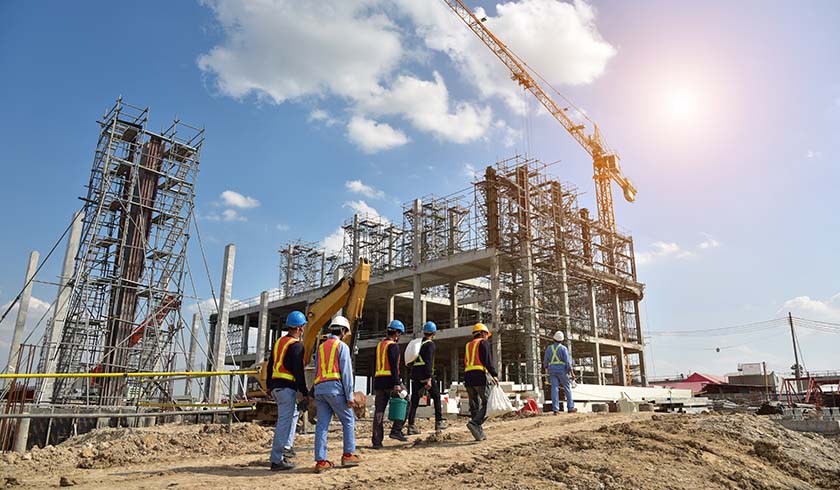The future opportunities of build-to-rent in Australia
The build-to-rent market is smaller in Australia than in other parts of the world, but data shows conditions are ripe for its full-scale introduction. To get on top of the concept while it’s still in its infancy, here’s what you need to know.

No matter which kind of investment property investors are involved in, knowing your demographics is key if investors are to have a successful rental property, and build-to-rent is no exception.
Outlined in developer CBRE’s report Build-To-Rent: Who? What? Where, build-to-rent, the act of building properties specifically for rental, has not taken off quite yet in Australia, but the conditions are certainly ripe for the model when it does make a full-scale introduction.
The Australian residential rental market was referred to in the report as a “cottage industry”, where the vast majority of landlords own one property or two, at 71 per cent and 19 per cent, respectively.
Because the level of housing unaffordability in metropolitan markets across Australia has made home ownership a difficult prospect, the report claimed that this would give build-to-rent an opportunity to cater for the large number of renters in the market.
“The current rental provision likewise provides an opportunity for developers to enter the market and offer higher quality products and a variety of amenity experiences for customers which will both attract and retain them,” the report noted.
Using the example of Sydney, the rise of build-to-rent developments is likely to occur in more fringe locations than closer to the CBD.
The report states that population growth is expected in Parramatta, Macquarie Park and Livepool, among other areas, and while infrastructure investment is aimed to reduce congestion currently, the report claimed that build-to-rent developments would likely occur in these areas to meet the population growth figures.
“Unsurprisingly, the highest proportion of renters are in some of the most desirable and, therefore, expensive locations,” the report noted.
“Given the current high cost of land in these areas, it will be difficult — but not impossible — to make BTR developments stack up even with the pullback in residential markets and subsequent lower cost of land.
“Therefore, we anticipate most developments will initially be in more fringe locations and, crucially, they are expected to be in and around population growth corridors.”
The report also looked at residential rental bonds and found that out of 236,000 that were refunded in 2018, 54 per cent were held for less than two years, showing that the majority of renters prefer shorter tenancies than longer ones.
“It is important to recognise that within different rental occupier groups, there are different tenure requirements,” the report stated.
“For example, students typically find that tenures shorter than one year suit their university schedule; conversely, families with school-age children are likely to want to live in one rental property for the duration of schooling.”
In the UK, the build-to-rent market consists of 22 per cent as 18 to 24-year-old younger independents, 23 per cent make up those aged 45 and over who don’t intend to buy in the future compared to other demographics, 26 per cent make up those 25 to 44-year-olds without children and 29 per cent make up budgeting families.
Meanwhile, the data for the Pacific region shows couples making up the largest demographic of the currently limited build-to-rent developments at 53 per cent, individuals at 20 per cent, couples with children at 13 per cent, flatmates at 8 per cent and solo parents at 6 per cent.
“While BTR assets have some common features across locations, different products appeal to entirely separate demographic and socioeconomic niches. This means that the make-up of the asset largely depends on the type of customer that the owner is targeting and the location,” the report stated.
“For example, if a developer is targeting single households or young couples, then a mixture of one and two-bedroom units would most likely be the preferred make-up of the building. The location would need to be in proximity to transport for commuting and have good levels of amenity in the immediate surrounds such as retail and entertainment precincts.
“Whereas if they were targeting families, then the make-up would be more two-bedroom and three-bedroom units, and in addition to being near transport, parks and retail facilities, there would need to be schools and/or day care centres nearby.”
As millennials are considered to be a key tenant for build-to-rent property and are more likely to spend disposable income on entertainment and socialising, according to the report, providing facilities that cater to these needs — like lounges, pool tables and even cinema rooms — will likely attract more younger tenants.
The developments would not just need to target demographics, but locations as well, where countries with warmer climates, like Australia, would do better with outdoor facilities like a communal pool or outdoor barbeque areas, for example.
“Studies have shown that residents with friends in the same building are more likely to stay on a long-term basis which is why supplying facilities that build a community spirit are so important to an operator’s business model,” the report stated.
“Including high-quality amenities that aren’t going to be used by residents may lead to underutilised space and wasted cost.
“Yet, doing the necessary research and answering the questions who, what and where will go a long way to successfully providing an experience that will exceed customer expectations and see these assets thrive in the ever-evolving residential landscape.
“Knowing your target customer is key to making these developments succeed.”
